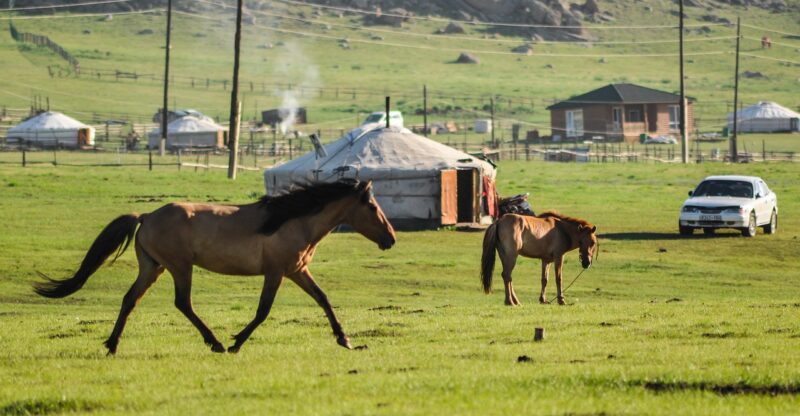The Fascinating World of Nomadic Tribes: A Glimpse into Life on the Move
November 13, 2024

Nomadic tribes are communities that move from one place to another rather than settling permanently in one location. Their way of life is not just a survival strategy but also a rich cultural tradition steeped in history and identity. This article delves into the fascinating world of nomadic tribes, exploring their lifestyles, challenges, and how they navigate the modern world.
1. Understanding Nomadism: What Is a Nomadic Lifestyle?
Nomadism is often categorized into two main types: pastoral nomadism and hunting-gathering nomadism. Pastoral nomads, like the Mongolian herders or the Maasai of East Africa, depend on livestock for their livelihood, moving their herds to find fresh pastures. In contrast, hunting-gathering nomads, like the San people of Southern Africa, rely on foraging and hunting for survival, migrating based on the availability of food resources.
Both lifestyles are adaptations to the environment, showcasing human resilience and ingenuity. Nomadic tribes utilize traditional ecological knowledge passed down through generations to navigate their landscapes effectively, whether it’s traversing vast deserts or snowy tundras.
2. A Day in the Life of a Nomadic Tribe
A typical day for members of a nomadic tribe varies greatly depending on the season and their specific lifestyle.
Pastoral Nomads*: For the Tuareg people of the Sahara, a day might start with tending to their camels or goats, milking them for fresh dairy products, and preparing to move their camps as needed. Their social structure is complex, often guided by traditions that dictate movement patterns and grazing rights.
*Hunter-Gatherers**: The Nenet people of Siberia might start their morning checking snares set the night before or gathering berries in the forest. Their large families usually share tasks, promoting a strong sense of community.
Cultural Practices*: Regardless of their type, many tribes practice rituals and social gatherings that reinforce cultural identity, such as storytelling, music, and dance. These elements are vital for the transmission of knowledge and maintaining cultural heritage.
3. Challenges Faced by Nomadic Tribes in the Modern World
Despite their rich cultural identities, nomadic tribes face a myriad of challenges:
Climate Change*: Changing weather patterns drastically affect migration routes and traditional grazing lands, jeopardizing their livelihoods.
Land Rights Issues*: Many nomadic populations are often displaced due to land development or environmental policies that overlook their rights to customary lands.
Cultural Erosion*: With globalization and urbanization, younger generations are increasingly drawn to urban life, which threatens the continuity of traditional lifestyles and languages.
Legal Recognition*: Many nomadic tribes struggle to gain legal recognition of their land use, which complicates their ability to maintain their traditional way of life.
4. Preserving Nomadic Cultures: Efforts and Initiatives
Many organizations and tribal communities are collaborating to preserve nomadic cultures while adapting to modern needs:
*Community-Based Tourism**: Encouraging sustainable tourism helps nomadic groups share their culture with outsiders while generating income. It fosters appreciation for their way of life and creates economic opportunities.
Education Programs*: Initiatives focusing on cultural education aim to teach young nomads about their heritage, ensuring future generations carry on their traditions.
Advocacy for Rights*: Various NGOs and global organizations advocate for the rights of nomadic communities, pushing for policy changes that recognize their land rights and contribute to their social justice.
Collaborative Conservation*: Some tribes engage in conservation efforts, using their ecological knowledge to manage local ecosystems effectively. This not only helps preserve their environment but also integrates them into broader conservation dialogues.
5. The Beauty of a Nomadic Existence
Despite the challenges, the nomadic lifestyle is often marked by a deep connection to the land and a profound sense of community. Many nomadic cultures emphasize sustainability, living harmoniously with nature, and valuing experiences over material possessions.
Traveling through the landscapes, whether it be mountains or plains, carries a rhythm of life that many sedentary lifestyles cannot offer. The camaraderie among tribes fosters a unique bonding experience, with celebrations and rituals illustrating communal values and shared knowledge.
As we explore the fascinating world of nomadic tribes, it becomes evident that their cultures hold crucial reflections of resilience, adaptability, and profound respect for the earth.
Conclusion
The nomadic tribes provide rich insights into human history, identity, and ecological knowledge, representing a unique way of life that fosters community, resilience, and sustainability. As the modern world encroaches upon these traditional lifestyles, it is vital to support these communities in their efforts to reconcile modernity with their cultural heritage.
Understanding and appreciating the lives of nomadic tribes can remind us of the values of adaptability, connection to nature, and the beauty of living life on the move. By promoting their rights and preserving their cultures, we can ensure that future generations can continue to explore the fascinating world of these communities.







